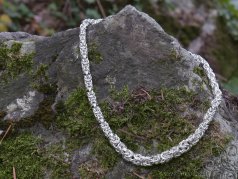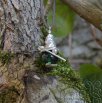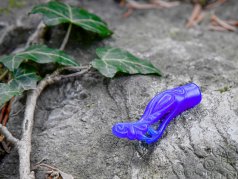WHAT ABOUT BACK THEN ?
Being craftspeople as well as salespersons, the ancient Northmen created their ornaments with ringmail techniques, lost wax process, casting in soapstone moulds, weavings and braidings, fiiligree, or stamping patterns. The jewel served both as ornament and as a wallet of sorts, since metal weight was a universal value in trading.
Jewels of viking origin were as widely found in Europe as foreign origin jewels were in the North, showing that they were choice trading items, valuable and easy to carry around.




